Jaguar E-Pace: prices, specs and reviews
Five-seater crossover gets a sporty design and a cheaper price tag












The luxury sports car manufacturer Jaguar has added another car to its line-up of SUVs, with a new E-Pace that offers buyers a smaller – and cheaper – alternative to the F-Pace.
The five-seat crossover is the third car in the company’s move towards SUVs. It will join the critically acclaimed F-Pace and the upcoming all-electric I-Pace.
The new E-Pace shares several components with the Range Rover Evoque, says Car Buyer. It’s also a direct rival to the Audi Q3 and the Mercedes GLA.
Subscribe to The Week
Escape your echo chamber. Get the facts behind the news, plus analysis from multiple perspectives.

Sign up for The Week's Free Newsletters
From our morning news briefing to a weekly Good News Newsletter, get the best of The Week delivered directly to your inbox.
From our morning news briefing to a weekly Good News Newsletter, get the best of The Week delivered directly to your inbox.
Here’s everything you need to know about the new SUV:
Price and release
Orders for the E-Pace are now open, says the Daily Express, with prices starting at £28,500 for the entry-level variant.
Range-topping First Edition models, featuring 20ins diamond-finished alloy wheels and a panoramic roof, start at £47,800. But this particular model is only available for those who order it this year.
Design
The E-Pace has a much more rounded aesthetic than the F-Pace, although it incorporates several cues from Jaguar's line-up.
Styling for the E-Pace has been inspired by the F-Type, the company says, which can be seen in the SUV's rounded grille and headlights. Air vents nestling in the front bumper have also been derived from the sports car, as have the muscular arches above the rear wheels.
Its tail light cluster is similar to that of the I-Pace, including the sharper edges to a thin LED strip running from the rear side panelling to the boot lid. The E-Pace also gets a sloping roofline at the rear, a styling cue that features on both the F and I-Pace.
According to AutoExpress, the E-Pace is referred to as "cub" at Jaguar, a reference to its connection with the larger F-Pace. The name is "cheekily referenced in a small graphic around the edge of the windscreen with a mother Jaguar being followed by her cub".
Interior
The F-Type-theme continues on the inside, says Autocar. Jaguar has included the sports car's "low grab rail" and a "stick shifter for the automatic gearbox rather than a rotary controller."
Design chief Ian Callum told the magazine the company has "worked hard on the interior perceived quality, with the right use of metals and materials".
Drivers can spec a "a 12.3ins TFT digital instrument panel and a head-up display", says AutoExpress, while all models come fitted with a "10.2ins touchscreen for the infotainment system".
"Sadly you'll still have to make do with Jaguar's InControl Pro suite of apps", the magazine says, instead of the Apple CarPlay and Android Auto systems that appear on most of the E-Pace's rivals.
Technology
Jaguar offers a host of driverless tech, says the Daily Telegraph, including "a stereo camera to enable Autonomous Emergency Braking" plus "Lane Keep Assist and Traffic Sign Recognition". It can also detect and avoid pedestrians that may stray into the road.
Buyers can spec the company's Intelligent Speed Limiter and Driver Condition Monitor, which is able to detect and alert the driver if they show signs of drowsiness, adds the newspaper.
Pocket-Lint says buyers can also choose to get 4G wi-fi and five USB charging sockets in their E-Pace, as well as choose an option that allows them to open their car using a wristband. These connectivity options also mean they can use their smartphone to remotely lock or unlock it.
Drivers can store their mobile phone or tablet in the "huge bin in the centre console", says Top Gear, and it can also be used to store a pair of large wine bottles. Jaguar has also fitted a large, "boxy" boot - because the E-Pace "is a family car at heart."
Engines and performance
Jaguar launched the E-Pace with a selection of 2.0-litre four-cylinder Ingenium engines, and power outputs ranging from "a 148bhp diesel to a 296bhp petrol", says Evo. Base-spec diesel motors come with a six-speed manual transmission, while the rest of the range will have a nine-speed ZF automatic gearbox.
Buyers can choose between three different drivetrains, including a front wheel drive layout for the 148bhp diesel and a four-wheel drive system for models further up the range.
Rounding off the line-up is an "Active Driveline" all-wheel drive system, which Evo says can direct "almost all" the engine's torque to the rear axle when needed.
Buyers seeking the most efficient model should opt for the 148bhp diesel, says CarBuyer, as it has a fuel economy of 60.1mpg. This lowers to 54.3mpg on the 178bhp model and 45.6mpg on the 237bhp diesel variant.
Fuel economy isn't as good on petrol models. The website says the 247bhp and 296bhp variants return "36.7 and 35.3mpg respectively".
Reviews
Every element of the interior “feels like a Jaguar”, says Autocar, including the swooping dashboard and the grab handle in the centre console derived from the company’s F-Type sports car.
The end result looks “pretty good” and the cabin feels focused around the driver, the magazine says. Some of the plastics don’t match the quality of the E-Pace’s German rivals but the SUV’s interior still feels “premium”.
There’s enough space for four adults, says Auto Express, while five can fit “at a push”. Storage is plentiful thanks to multiple cubbyholes placed around the cabin, as well as a “generous” 577-litre boot.
Optional extras include a powered tailgate and autonomous braking, the magazine says. Buyers who opt for the mid-range SE model will get these included as standard.
On the road, the E-Pace’s four-cylinder Ingenium engine produces “adequate” performance, while the nine-speed automatic gearbox is “usefully smooth” in auto or manual modes, says Evo.
The SUV’s chassis is a “better effort”, says the magazine. Jaguar has refined its new electric steering system and kept any excessive body roll under control.
Rivals
The mid-size SUV segment is highly competitive, with the E-Pace facing a host of competitors that have been in the crossover market significantly longer than Jaguar has.
BMW's X3 and the Audi Q3 will be the car's closest rivals, says Autocar. They both cost between £28,000 and £30,000, meaning Jaguar's offering will sit in the middle of them.
While its German rivals "closely resemble the bigger SUVs in their respective ranges", Jaguar's designers "have been bolder" by "taking their inspiration from Jaguar’s F-Type sports car", What Car? says.
This could prove to be one of the key selling points of the British SUV. Despite the likes of the Audi RSQ3 offering sporty looks and performance, such models often come with significantly higher price tags.
The Mercedes GLA can also be seen as a rival to the E-Pace, although What Car? says it isn't as spacious or cheap as its rivals and comes with "noisy diesel engines".
Create an account with the same email registered to your subscription to unlock access.
Sign up for Today's Best Articles in your inbox
A free daily email with the biggest news stories of the day – and the best features from TheWeek.com
-
 Nuclear near-misses
Nuclear near-missesThe Explainer From technical glitches to fateful split-second decisions, the world has come to the brink of nuclear war more times than you might think
By Rebecca Messina, The Week UK Published
-
 What is cloud seeding and did it cause Dubai's severe rainfall?
What is cloud seeding and did it cause Dubai's severe rainfall?The Explainer The future is flooded
By Devika Rao, The Week US Published
-
 American Airlines pilots are warning of a 'significant spike' in safety issues
American Airlines pilots are warning of a 'significant spike' in safety issuesIn the Spotlight The pilot's union listed 'problematic trends' they say are affecting the airline's fleet
By Justin Klawans, The Week US Published
-
 Mercedes-Benz E-class review: what the car critics say
Mercedes-Benz E-class review: what the car critics sayThe Week Recommends The 11th generation E-class delivers a polished drive and features a spacious interior packed with tech
By The Week Staff Published
-
 Mercedes-AMG G63 4x4² review: what the car critics say
Mercedes-AMG G63 4x4² review: what the car critics sayThe Week Recommends This truly luxurious 4x4 is pretty straightforward and off-road it feels invincible
By The Week Staff Published
-
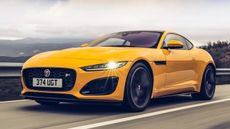 Jaguar F-Type review: what the car critics say
Jaguar F-Type review: what the car critics sayThe Week Recommends The F-Type remains a ‘refreshingly old school’, ‘wildly good-looking car’
By The Week Staff Published
-
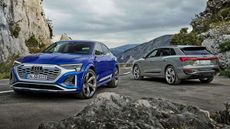 Audi Q8 e-tron review: what the car critics say
Audi Q8 e-tron review: what the car critics sayfeature Audi’s new electric SUV is a ‘pleasant’ but ‘unremarkable’ drive
By The Week Staff Published
-
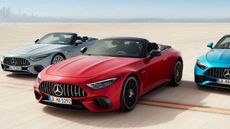 Mercedes-AMG SL review: recapturing a golden age of motoring
Mercedes-AMG SL review: recapturing a golden age of motoringfeature The latest SL harks back to when the first model set ‘new standards for style and comfort’
By The Week Staff Published
-
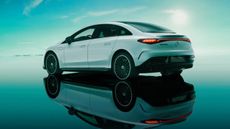 Mercedes-Benz EQE review: what the car critics say
Mercedes-Benz EQE review: what the car critics sayfeature This is a ‘rounded’ electric vehicle, but looks underwhelming – like a ‘squashed Prius’
By The Week Staff Last updated
-
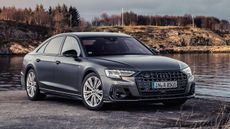 Audi A8 60 TFSI e review: what the car critics say
Audi A8 60 TFSI e review: what the car critics sayfeature This hybrid Audi A8 balances refinement, strong performance and impressive efficiency
By The Week Staff Published
-
 Audi Q4 Sportback e-tron review: a smart, practical electric SUV
Audi Q4 Sportback e-tron review: a smart, practical electric SUVThe Week Recommends The Sportback version of Audi’s compact EV adds more dynamic styling for minimal sacrifice of space
By Holden Frith Published